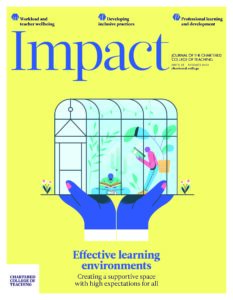Using live feedback and real-time data to support English language learners in one-to-one settings

Naveed A Khan, Kennesaw State University, USA
Faced with a lack of funding and teacher shortages, many classrooms across America are becoming more crowded. Within this crowd, English language learners (ELLs) are among the fastest-growing group of students. Obtaining English proficiency is a critical skill to ensure these students’ future success in higher education and the workplace. As demonstrated by the coronavirus pandemic, the increased integration of technology has the ability to support these students in new and innovative ways. In particular, the use of digital apps that feature live feedback and real-time data-collection capabilities can allow teachers to accurately assess and support students in EAL (English as an additional language) programmes.
Which apps feature live feedback and real-time data-collection capabilities?
Nearpod, Google Classroom and Classkick are among the most popular apps with these capabilities. Nearpod allows teachers to embed formative assessments alongside informational slides. Both teacher-paced and student-paced formats generate real-time data that can be used to monitor progress. Some features, like the Draw It tool, allow for teachers to provide live, in-the-moment feedback. Google Classroom is a learning management system that brings together standalone Google Apps. Teachers can create classes and assign documents to students. As students work, teachers can view real-time progress and provide live feedback. Similarly, Classkick is a free website that provides teachers with the ability to create and assign work to students. It features live progress monitoring and data collection, live feedback, auto-grading capabilities, and a live one-to-one teacher–student chat system. Feedback can be left in several different formats.
All of these features can be remarkably useful when supporting mixed-level groups of ELLs. With Nearpod, teachers can alternate between teacher-paced and student-paced mode at any time. When the real-time data collection reveals a common misconception, teachers can immediately switch back to direct instructionA method of instruction in which concepts or skills are taught using explicit teaching techniques, such as demonstrations or lectures, and are practised until fully understood by each student and reteach. Any slide can be converted to a Draw It activity at any moment, which allows teachers to view live student responses. The built-in Immersive Reader, which has read-aloud and translation capabilities, provides additional ELL support. With Google Classroom, teachers can assign differentiated work to ELLs. As students receive personalised teacher feedback and complete assignments, they can be granted access to additional work that is at their level. The last app, Classkick, facilitates the greatest degree of interaction between teachers and students. The live grading option for fill-in-the-blank and multiple-choice questions allows ELLs to receive instant feedback and progress at their own pace. Students can raise digital hands to request teacher feedback or help. The diverse teacher feedback options (written, drawn, visual or auditory) support a mixed group of ELLs – for example, students who have greater listening proficiency in English could benefit more from audio feedback. There is even a peer feedback system that allows students to check and provide support to classmates; this allows for higher-level ELLs to support their lower-level peers.
Benefits of live feedback and real-time data in one-to-one settings
One-to-one classroom settings facilitate the acquisition of real-time data. In contrast to paper-and-pencil methods, ‘technology supports the process of collection-interpretation-exploitation of the evidence of student achievement’ (Panero and Aldon, 2016, p. 85). The instantaneous nature of digital apps allows teachers to provide more frequent, formative feedback. Additionally, they are able to reach a greater number of students. Real-time data allows them to identify struggling students – for example, both Classkick and Nearpod have auto-grading features that serve to facilitate this process. Overall, each application has the ability to provide an overview of where each student in the class is relative to his or her peers. This data allows teachers to ensure that no student goes unseen, while the live feedback allows them to intervene accordingly.
Facilitation of differentiation
In general, larger class sizes comprise a greater diversityThe recognition of individual differences in terms of race, ethnicity, gender, sexual orientation, socio-economic status, physical ability, religious beliefs and other differences of students with different learning needs. As a result, differentiation can be a challenge for most educators. Even ELL-only classrooms can include a wide range of mixed-level students. Apps that feature live feedback and real-time data can support differentiation because they collect individualised student data, which then allows the teacher to interpret the level of support or enrichment that each student may need at any given moment. For example, a teacher may provide differentiated exit tickets to different students based on their Nearpod data, or an independent five-minute Classkick activity may reveal that certain students need to join a small group while others are ready for a more rigorous task. This degree of differentiation is necessary for ELLs, as most of them have different speaking, reading, writing and listening proficiencies.
Conclusion
Many teachers are faced with increasing class sizes that feature a large number of ELL students. The appropriate use of instructional technology can mitigate some concerns. A variety of digital apps support live feedback and real-time data collection in one-to-one settings, a model that many classrooms have transitioned to due to COVID-related restrictions. Using tools like Nearpod, Google Classroom and Classkick allows teacher to collect and interpret real-time student data. Moreover, teachers can provide live feedback and give individualised support to students. ELL students, who require more support due to pre-existing language barriers and education gaps, stand to gain the most value from these practices, regardless of the app.
- Panero M and Aldon G (2016) How teachers evolve their formative assessment practices when digital tools are involved in the classroom. Digital Experiences in Mathematics Education 2(1): 70–86.










